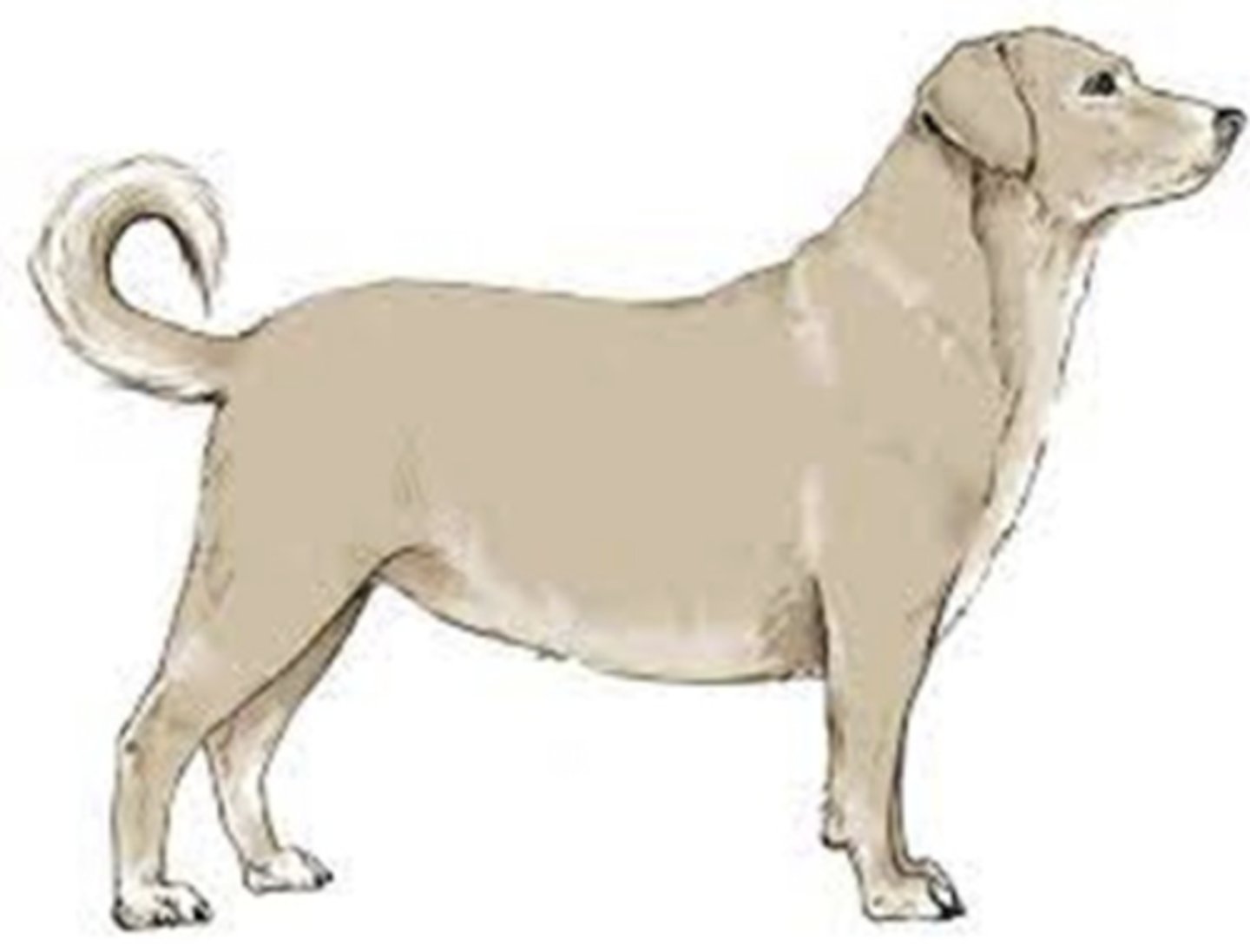Lecture 64 (Dietary Management for all Life Stages)
1/20
There's no tags or description
Looks like no tags are added yet.
Name | Mastery | Learn | Test | Matching | Spaced |
|---|
No study sessions yet.
21 Terms
-Diabetes Mellitus
-DJD, orthopedic disease
-cardiac/respiratory conditions
-cancer
-hypertension
-shorter lifespan
what does an overweight/obese BCS predispose pets to?
leptin, TNF-α, interleukins, and CRP
fat is a pro-inflammatory endocrine organ that releases...
-40% overweight → 40 kg × 0.4 = 16 kg excess
-ideal weight = 40 kg - 16 kg = 24 kg
dog weight = 40 kg, BCS 9/9
what is the % overweight and actual weight over ideal (in kg's) for this dog?

10% overweight
each BCS > 5/9 is equivalent to being ___% overweight
-70 × (ideal BW in kg)^0.75
-OR: 30 × (ideal BW in kg) + 70
how do you calculate RER (resting energy requirement)?
RER × life stage/activity factor
how do you calculate MER (maintenance energy requirement)?
80-100%
feeding ___-___% of ideal-weight RER is effective and well tolerated
10%
no more than ___% of daily calories should come from treats!
-30 kcals is 10% of daily calories
-at 5 kcals/treat = 6 treats/day
Bubba's MER is 300 kcal/day. His treats are 5 kcals each. How many kcal/day can be allotted to treats and how many treats can he receive per day?
-dogs: 1-2% per week
-cats: 0.5-2% per week
what is the targeted/desired weight loss per week for cats and dogs?
benefits:
-preferred metabolic energy source
-increases palatability
caution:
-excess can cause greasy diarrhea (steatorrhea)
what are the pros and cons of having fat in a diet?
building blocks for:
-muscle repair
-cell line replenishment
-enzyme production
risks:
-too little: anemia, poor performance
-too much: kidney strain
what are the pros and cons of having protein in a diet?
advantages:
-meet AAFCO/NRC standards
-quality control
-consistent ingredients
disadvantages:
-potential contamination
-nutritional deficiencies
what are the advantages and disadvantages of using commercial diets?
-"Boutique, Exotic, Grain free" diets
-linked to DCM due to taurine deficiency or exotic ingredients
what are BEG diets and what is it linked to?
-pros: tailored to individual needs
-cons: nutritional deficiencies common unless balanced
-use Balance It® to generate vet-approved recipes
what are the pros and cons of using home-cooked diets?
-zoonotic pathogens (e.g., Salmonella, parasites)
-gut flora imbalance
-nutrient imbalances
what are the risks of using raw diets?
-feed high-quality growth diet
-higher % of protein, fat, calcium, phosphorus, NaCl
-DHA/EPA added to support neural development
-transition to adult maintenance around 12-14 months
discuss the key points in maintaining healthy body weight throughout the growth stage in canine and feline patients
by 6-8 weeks of age
when can puppies be weaned?
-monitor weight regularly; adjust diet after spay/neuter
-encourage exercise and non-food rewards
protein minimums:
-dogs: 1 g/lb or 2.5 g/kg ideal BW/day
-cats: 2 g/lb or 5 g/kg ideal BW/day
discuss the key points in maintaining healthy body weight throughout the adult stage in canine and feline patients
dogs:
-↓ caloric needs by 18–25% (especially >7 yrs)
cats:
-↓ needs through age 12 (~3%/yr)
-↑ needs in cats >12 yrs
discuss the key points in maintaining healthy body weight throughout the senior stage in canine and feline patients
-require higher calorie diets (450-550 kcal/cup)
-higher % calories from fat
-rarely needed for most household pets
discuss the key points in maintaining healthy body weight for active/working dogs